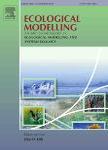版权所有:内蒙古大学图书馆 技术提供:维普资讯• 智图
内蒙古自治区呼和浩特市赛罕区大学西街235号 邮编: 010021

作者机构:Univ Paulista Post Grad Program Prod Engn UNIP Sao Paulo Brazil Univ Paulista ICET Sci & Technol Inst UNIP R Dr Bacelar1212 BR-04026002 Sao Paulo Brazil
出 版 物:《ECOLOGICAL MODELLING》 (生态模拟)
年 卷 期:2019年第393卷
页 面:98-106页
核心收录:
学科分类:0710[理学-生物学] 07[理学] 09[农学] 0713[理学-生态学]
主 题:Emergy Paraconsistent annotated logic Decision-making Hydropower Sustainability index
摘 要:The process of decision-making is a complex task that can become more challenging if the information provided by indicators is contradictory. Emergy accounting is an environmental accounting methodology that has been used to guide environmental decision making. In this paper we propose a comprehensive tool to support decision-making in emergy accounting. Paraconsistent Logic is a non-classic logic, which can aid in decision-making when the investigator is confronted with contradictory results. Paraconsistent Tri-Annotated Logic (PL3v) is proposed as a decision tool to compare different systems and allow selection of those alternatives with the best performance from the standpoint of sustainability defined in emergy terms. The rationale behind our selection of a set of emergy indicators to assess sustainability included such factors as increased efficiency, setting a priority for local resource use and minimization of the use of non-renewable resources. Two actual examples from the literature that resulted in contradictory evidence of system sustainability were compared within the framework of PL3v. Emergy indicators that correspond to positive evidence of sustainability (i.e., those that show increased efficiency and greater local resource use) were assigned as two favorable logic measures of sustainability. The PL3v analysis is completed with the identification of evidence that is unfavorable to sustainability, which is given by a third indicator negatively correlated with sustainability (i.e., non-renewable resource use). Operationally, the methodology proposed the normalization of the indicator values between [0,1] to fit to the PL3v annotation framework. Comparison of the systems examined is presented through the Paraconsistent Logic approach with the aid of a graphical representation and the calculation of the degree of certainty related to the truthfulness of the sustainability proposition.